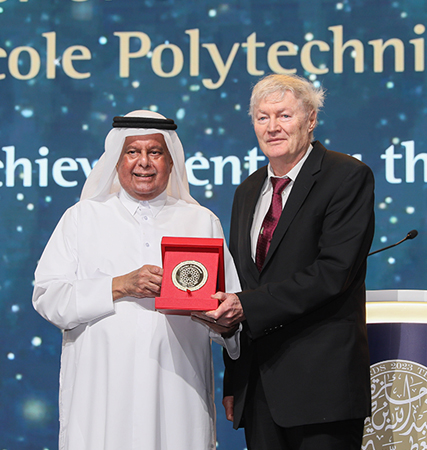Year - 2023
Lifetime Achievement for the Advancement of Renewables
Professor Michael Grätzel
Professor, Director of the Laboratory of Photonics and Interfaces at the École Polytechnique Fédérale de Lausanne
Professor Michael Grätzel is an internationally recognised innovator and leader in the field of fuel generation by sunlight. For his pioneering work, he has received numerous accolades including the Millennium 2000 European innovation prize; 2004 Italgas Prize, two McKinsey Venture awards in 1998 and 2002; 2005 Gerischer Prize, 2009 Balzan Prize, 2010 Millenium Technology Grand Prize, Technology Academy Finland, 2012 Albert Einstein World Award of Science; 2017 Global Energy Prize; 2015 King Faisal International Science Prize, Saudi Arabia 2014 Samson Prime Minister’s Prize for Innovation in Alternative Fuels, 2014 First Leigh-Ann Conn Prize in Renewable Energy, USA and many others.
Professor Grätzel discovered molecular photovoltaics, being the first to conceive and realise mesoscopic photosystems based on molecular light harvesters that convert light very efficiently to electricity. He is credited with moving the photovoltaic field be yond the principle of light absorption via diodes to the molecular level. The new generation of dye sensitised and perovskite solar cells that emerged from his research can rival and even exceed the performance of conventional photovoltaics.
Professor Grätzel is the author of over 1,750 articles, two books and inventor or co-inventor of over 80 patents. His work has been cited over 450,000 times A recent bibliometric ranking by Stanford University places him first amongst 100,000 world-wide leading scientists across all areas of science. According to the Web of Science (2022), he is currently the most highly cited chemist in the world.
Professor Grätzel’s revolutionary cell design presented a new paradigm since it features a three-dimensional mesoscopic junction, in contrast to the planar p-n architecture used in conventional solar cells. The prototype of this new photovoltaic family is the dyesensitised solar cell (DSC), also referred to as “Grätzel cell”, which employs dye molecules, pigments, or quantum dots as light harvesters. These have engendered erovskite solar cells producing a second revolution in photovoltaics
